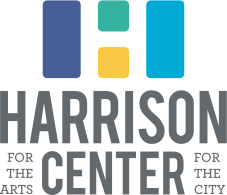Sink Magic: An Installation Piece by Logan Purcell
Over the past few weeks, I completed a sound installation built into the artist’s sink in the basement of the Harrison Center, right next to Hank and Dolly’s gallery. The installation is a piece that uses physical interaction with the sink to trigger audio samples, essentially turning the sink into a playable, interactive instrument. On the surface, it's a sink that makes noise when you tap it or run water through its basins. Underneath, it's a combination of contact mics, MIDI translation, and sampling hardware that brought some unique challenges in its construction, forcing me to experiment, take creative risks, and leverage the resources and help from my colleagues here at the Harrison Center. Below are a few thoughts about the process.
1. Equipment
At the core of the installation are five contact microphones attached to different points on the sink. Each mic is mapped to a different sound sample - a combination of ambient textures and pitched notes - depending on where the sink is interacted with. Tapping on the far sides of the sink triggers either a long drone or a short, sparkly arpeggio, while running water into/tapping your fingers on the basins triggers tuned notes.
The particular challenge this setup brought was in learning how to effectively convert an audio signal, like the one picked up from the microphones attached to the sink, into a digital signal that could trigger synthetic, custom-made samples. To this end, I did extensive research to find the right equipment for the job, and spent hours creating samples that fit the space, setting specific audio thresholds on each microphone, and finding ways to effectively control potential issues with crosstalk and other sound interference through audio processing software.
2. Sustainability
One of my goals from the beginning was to make this installation easy to maintain, power, and evolve over time. That meant thinking critically about the setup of the installation, cable and power management, and ways to update the sound of the installation to keep it fresh. I did my best to keep the setup simple to use, and I created some documentation for setup and volume control, so the piece can be operated relatively easily by gallery staff.
Beyond the function and ease of use of the installation, sustainability also meant flexibility. The sounds outputted by the sampler can be replaced or remapped, allowing the sink’s sound to change depending on the season, gallery show, or occasion. I see this installation not as a fixed object, but as a framework that will allow me to hopefully return and update the sounds, or even train a future music resident or intern how to do so themselves.
3. Collaboration
While I designed and built the system, the project wouldn’t have been possible without the support of the gallery staff and fellow artists. I leaned on the resources the Harrison Center provided in the form of the equipment itself, as well as the space, but also got help from a variety of colleagues on the physical setup, installation, sound profile, and other various details throughout the experimentation phase of this project. My friends provided listening ears, and smart, practical suggestions on ways to make the installation user (and staff) friendly.
That collaborative environment made it easier to experiment not just with the sounds I could create, but with the functionality and interaction of the space. It reminded me that taking creative risks and using a unique space effectively is easier when you have the support of bright, creative friends and an organization that pours support into artistic projects.
